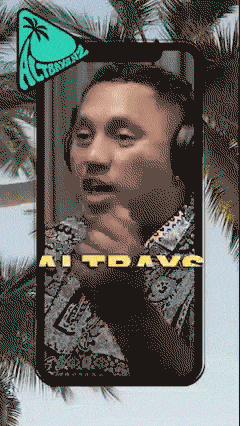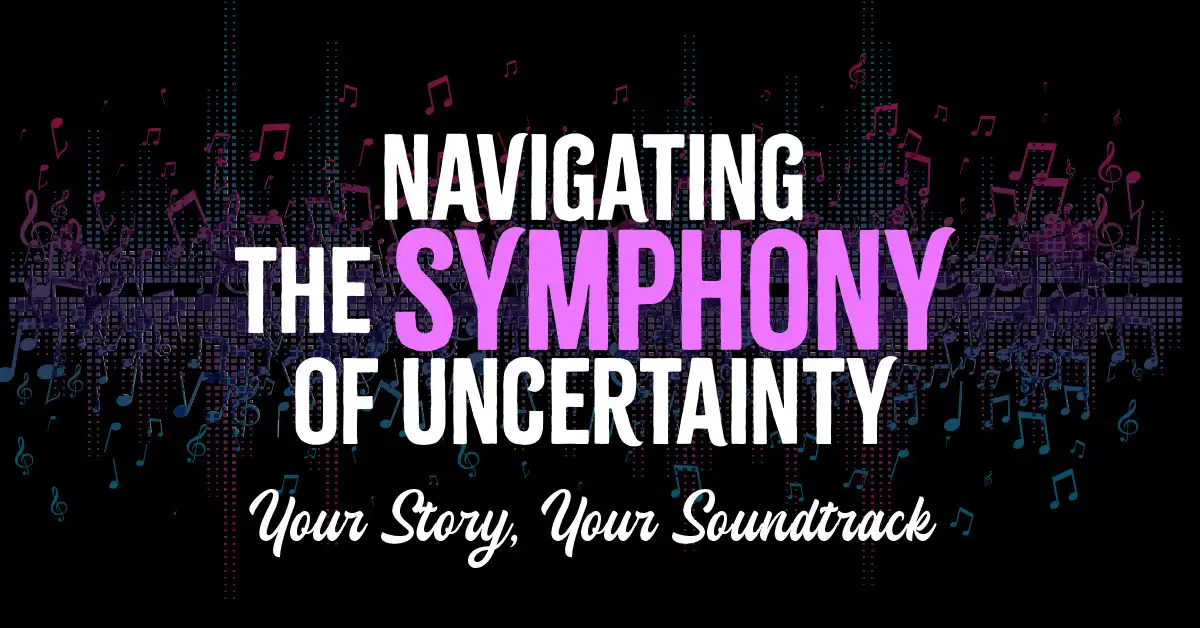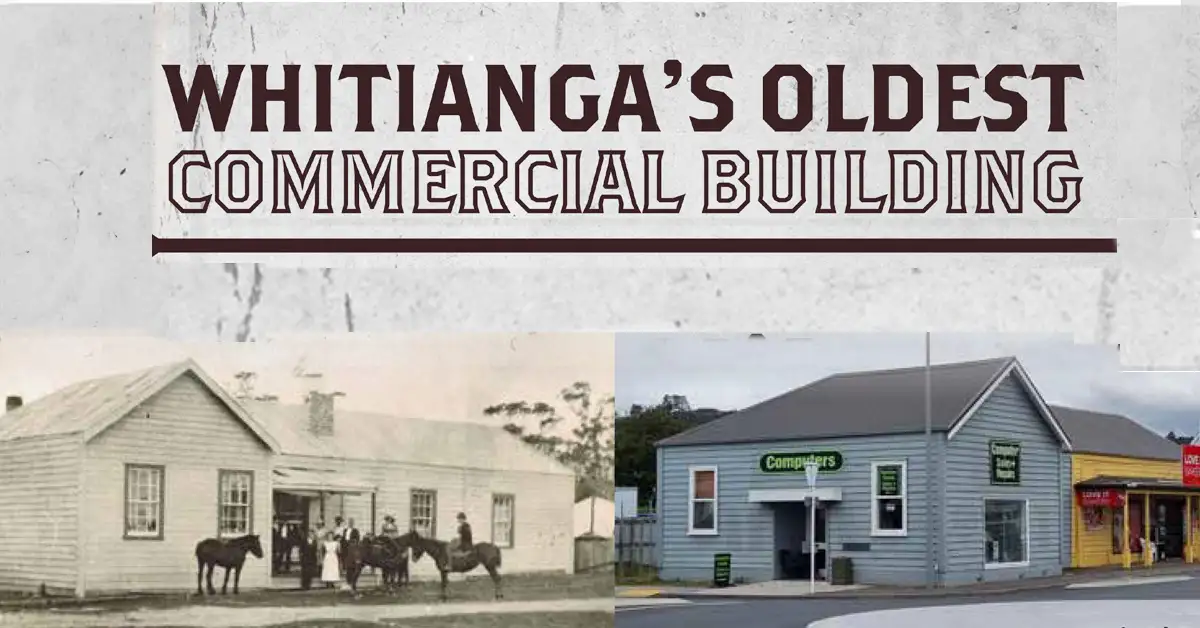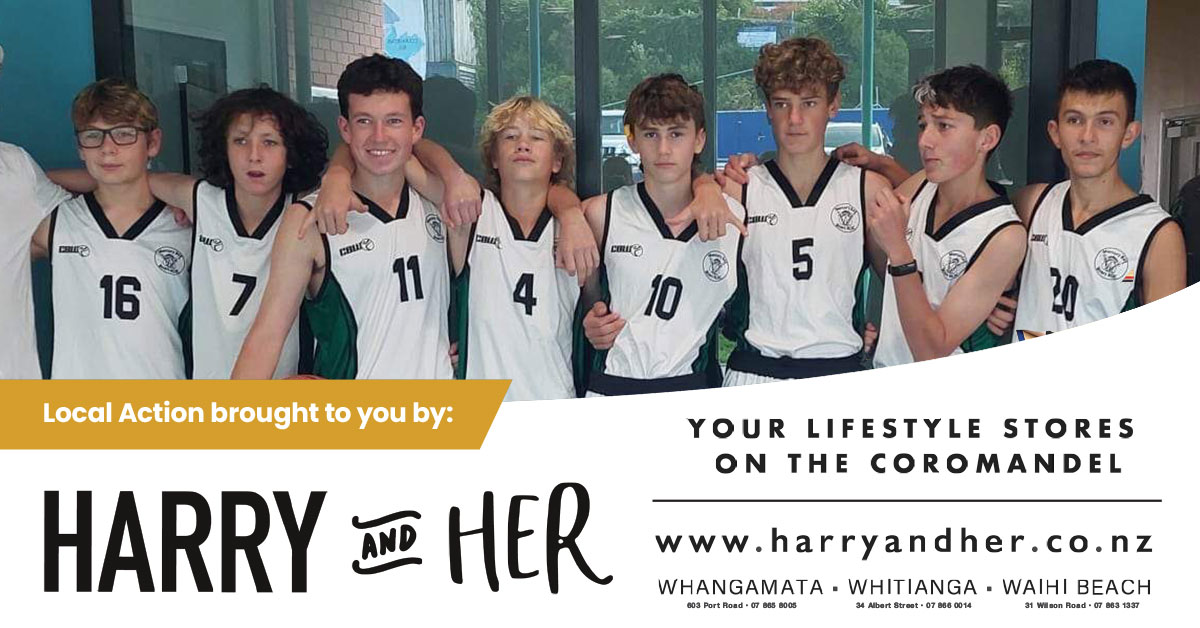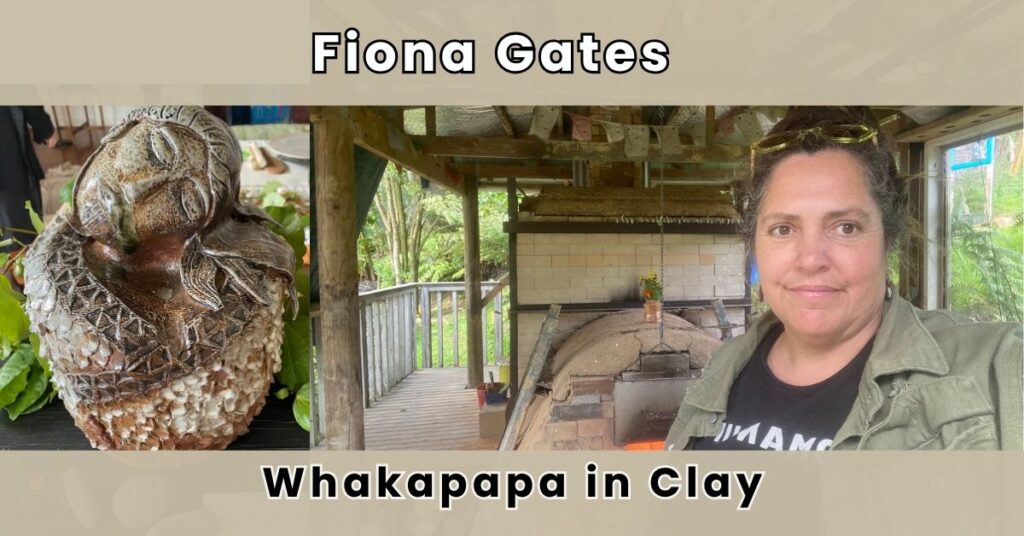
Te Whenua, Te Whānau, Te Toi
Meet Fiona Gates.
Ko Rākautapu tōku maunga
Ko Tapawae tōku awa.
Ko Hokianga tōku moana
Ko Ngātokimatawhaorua tōku waka
Ko Rahiri tōku tupuna
Ko Te Rarawa tōku iwi
Ko Ngāi Tūpoto tōku hapū
E noho ana ahau ki Coroglen
Ko Fiona Gates tōku ingoa.
Kia ora koutou katoa.
Fiona Gates describes her journey to clay as both a homecoming and a rediscovery. Growing up in Tāmaki Makaurau before settling in Coroglen, she found in the Coromandel not just the beauty of beach and bush, but a stable foundation for her whānau and creative life.

A self-taught ringa uku (clay artist), Fiona shares pūrākau (stories) through her work with uku. “I describe my mahi toi as cathartic, visceral and metaphoric,” she says. “People are often drawn into a relationship with my work.”
This connection to clay runs deep – “The origins of life came from micaceous clay and that might be why so many connect to clay work. It’s the whakapapa of everything. Ko au te whenua, ko te whenua ko au – I am the land and the land is me.”
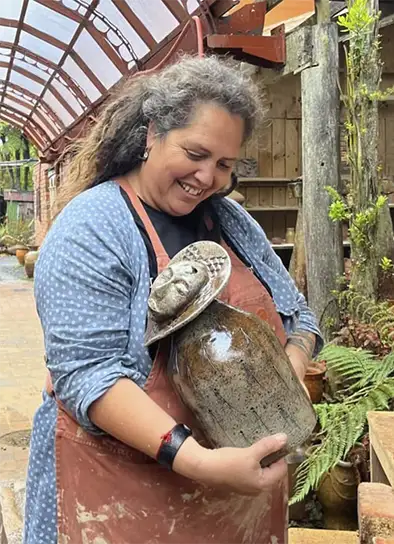
Though her first creative passion was mahi raranga (weaving harakeke/flax), Fiona found her true medium in clay about four years ago.
“The first bowl I made was at a Richard Naylor workshop and I was pretty chuffed with the outcome,” she recalls.
While she initially tried wheel throwing at Driving Creek Pottery, she found herself returning to handbuilding.
For Fiona, being Māori fundamentally shapes her artistic practice. “My work is often deeply personal and therapeutic,” she explains.
As a Māori adoptee during the era of closed interracial adoptions, her relationship with identity has been both a birthright and a hard-won reclamation. “I always knew in my bones that I whakapapa Māori, but I was in my forties when it became ‘official,‘” she shares. This lived experience fuels her passion for activism. Her art became another pathway to reconnect with her whakapapa. “Closed interracial adoption was intentional assimilation,” she notes. “This is partly why I am so passionate about social and environmental justice, especially indigenous rights.”
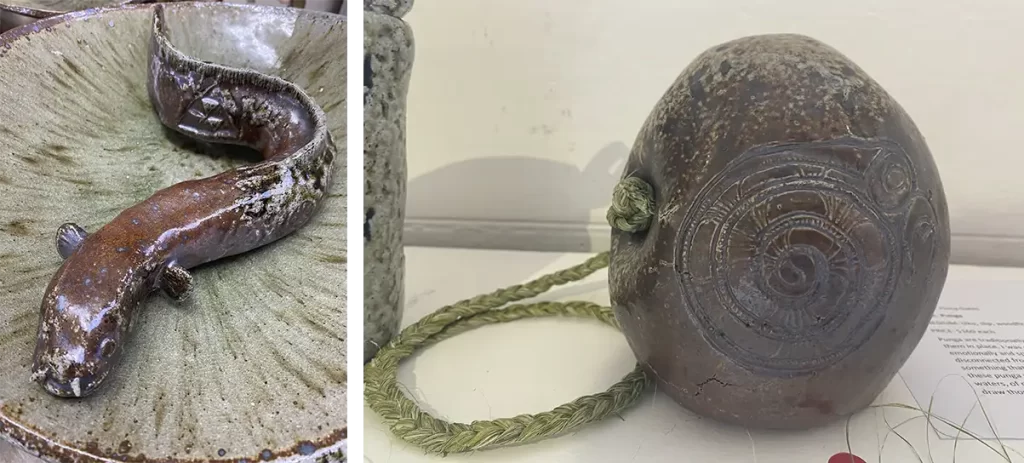
Her creative process draws on this journey of reconnection. “I draw on my struggle to find ways to reconnect with Te Ao Māori, the disorientation of disconnection, and processing trauma while living with PTSD.” Her creative process draws on pūrākau (stories) and Atua (gods), particularly Atua wāhine (goddesses), finding parallels between these narratives and her own life. Texture, sometimes imprinted with handmade stamps, plays a vital role in her work. “I use Raranga whakairo patterns and kōwhaiwhai. I’m excited to deepen my understanding of our traditional pattern making in the future.”
Fiona’s approach to working with clay is intuitive and sensory. “Because uku is so hands on, I work intuitively. Yes, there are skills and techniques but I tend to just start with an idea and I’m guided by my senses rather than a step-by-step plan.” She describes the creative process as almost transcendent: “When in my creative zone, it’s like channelling. I don’t always feel in control of the outcome, something takes over my being and speaks through my hands to the clay.”
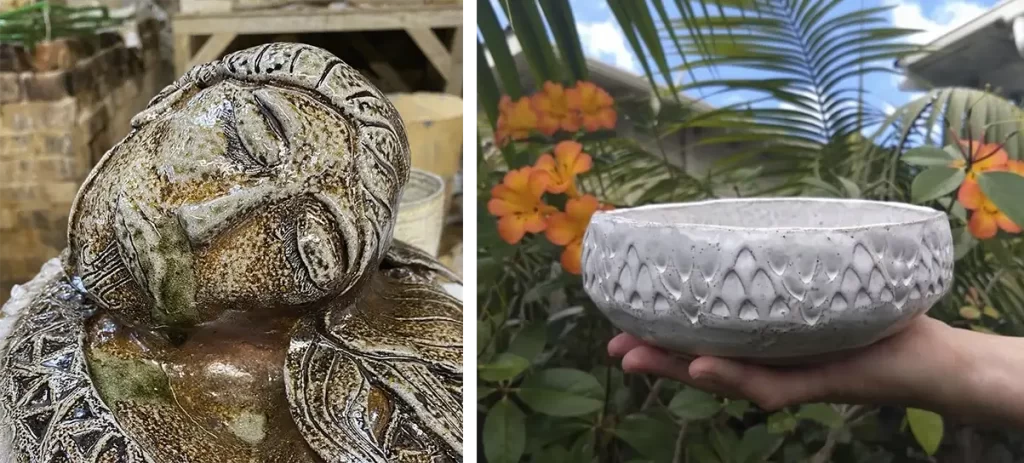
Woodfiring holds special significance in her practice. “My favourite process is to woodfire,” she says, describing the intensive communal process. “This is using a fire heated kiln to vitrify your work. It takes a whole day to load the kiln so we light the fire early the following morning.” The process becomes a gathering.
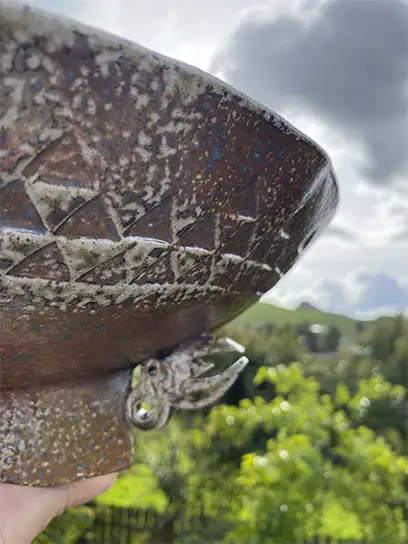
“It is a group effort, everyone takes turns stoking the fire, restocking the woodpile, making kai.” The dramatic transformation occurs at extreme heat. “The temperature reaches 1305°C; it’s hot but exciting.” The results are unpredictable and beautiful. “Sodium carbonate or salt can be added to ignite an alchemical union between it and the clay, the ash and the neighbouring pieces, creating the most beautiful effect on the finished piece.”
In 2024, Fiona’s artistic journey reached new heights when she was accepted into the artist residency programme at Driving Creek Pottery. “DCP is one of the hubs of NZ pottery, founded by Barry Brickell in 1974,” she explains. “The residency programme is a part of his legacy, leaving the Potteries and Trains in trust for future generations.”
The residency offered precious time and space to create. “I love being able to create all day and late into the night, precious hours I don’t have available at home with the kids.” The environment fostered both creativity and connection: “I love the freedom to explore ideas, the company of other residents and the unique environment, Barry’s spirit still very present.”
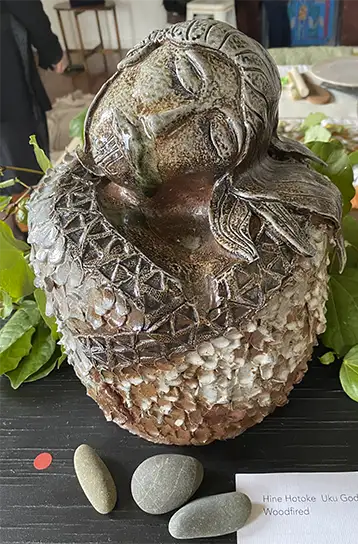
Fiona’s work gained wider recognition last summer when it was included in the two exhibitions. The Art Is Identity exhibition at Hauraki House Kapanga, supported by Creative Coromandel – He Mana Toi Moehau. And Coromind’s own summer exhibition space in Whitianga – Coromind ArtWorks. These exhibitions showcased her work alongside other accomplished artists, marking an important milestone in her artistic journey.
Community remains central to Fiona’s practice. She’s part of a local group of Māori and Pasifika wāhine brought together by Isabel Gilbert Palmer. “I’ve exhibited with this group both in Kūaotunu and Kapanga,” she notes. The collective has provided vital support: “Being in this group has nurtured my confidence and given me the space to grow by practice. There’s medicine in being with other indigenous women.”
Despite her growing body of work and recognition, Fiona is humble about her practice. “To be honest, I still feel wobbly calling myself an artist, let alone a Māori artist,” she admits. Well, sometimes it takes the outside eye to reflect back what the maker cannot yet see – the uku doesn’t lie. It is clear to me Fiona Gates, Māori artist, is one to watch.
Follow Fiona’s continuing journey with clay at: @toi_whakaora
Words by Lana Garland
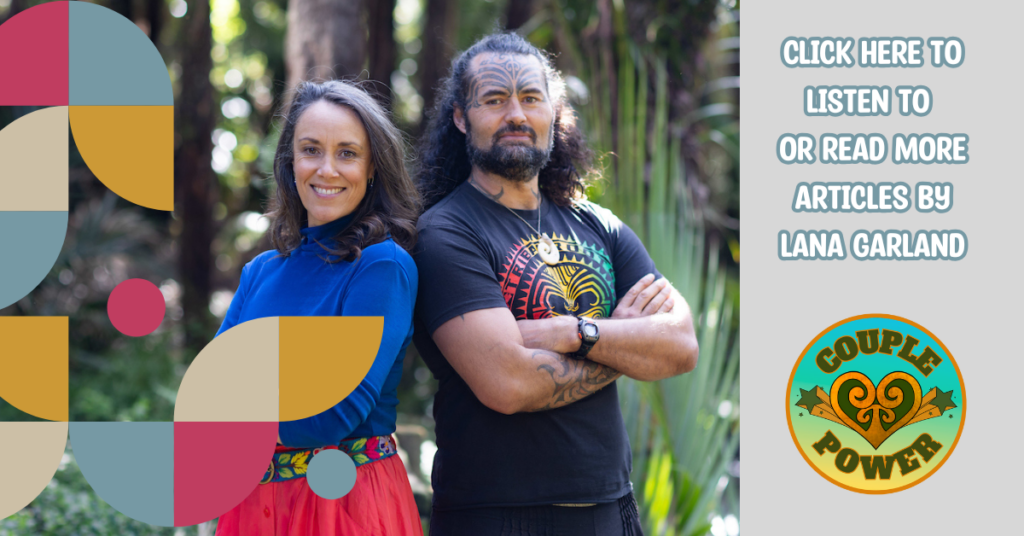
Coromind: Coromandel’s Collaborative Magazine

Help us take Coromind Magazine to new heights by becoming a member. Click here
Change the Weather for Your Business: Advertise with Us.
Advertise your business in the whole Hauraki Coromandel in the coolest Coromandel Art Magazine, from Waihi Beach/Paeroa /Thames up to the Great Barrier Island.
Advertise Smarter, Not Harder: Get in Touch


